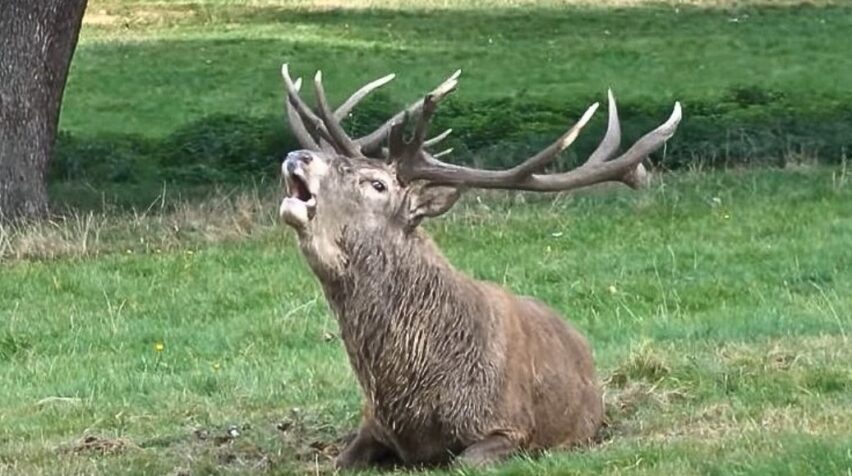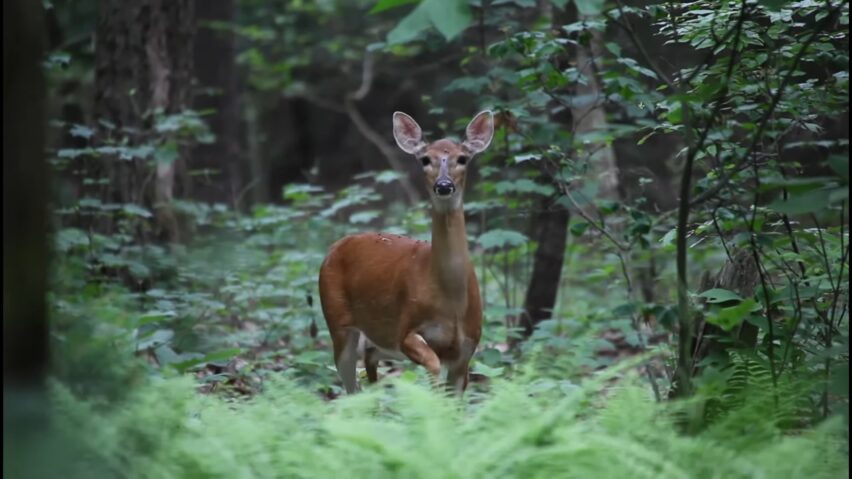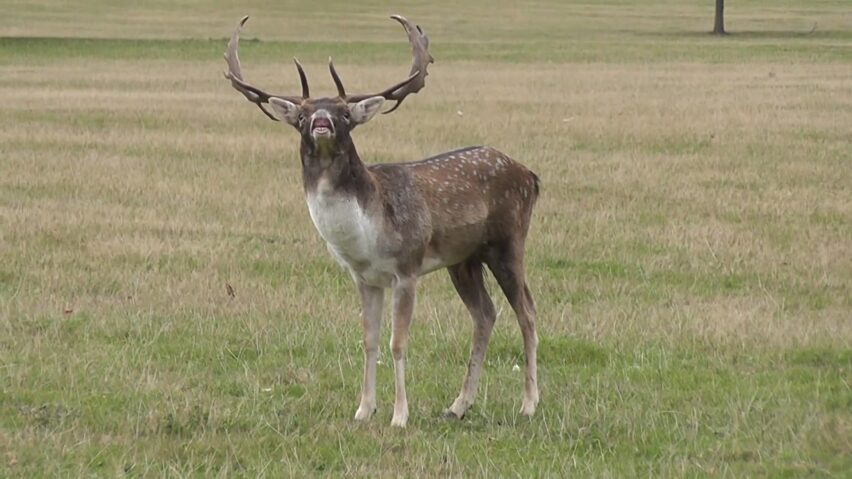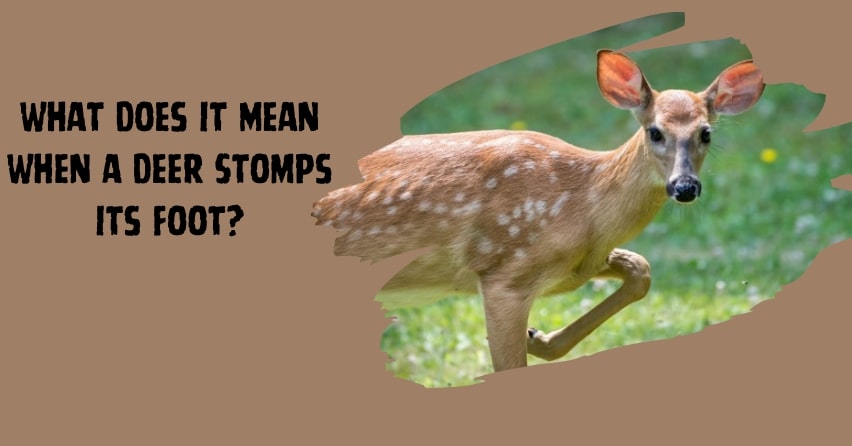Venturing into the woods, one may often witness the enchanting sight of a deer gently grazing or darting through the foliage. Occasionally, this tranquil setting is interrupted by a peculiar performance – a deer emphatically stomping its foot on the ground. This beguiling behavior piques our curiosity, urging us to decipher its meaning.
Understanding the language of deer is not merely an indulgence for the nature enthusiast. It is vital for hikers, photographers, and wildlife observers to recognize these signals. Decoding deer behaviors helps to foster harmonious human-animal interactions and avoid disturbing these gentle creatures in their natural habitat.
Understanding Deer Communication
The intriguing world of deer communication extends beyond the obvious, involving a plethora of sounds, scents, and physical signals. These elements combined allow them to interact with their environment and each other, sometimes in the most subtle of ways.
Among these signals, body language is prominent. Accompanied by vocalizations and scent marking, these signals are indispensable in conveying emotions, alerting to danger, or establishing social bonds within deer communities.
The Language of Deer
A. Body Language

1. Head Movements and Posture
The positioning and movement of a deer’s head can be quite telling. Raised heads often signify alertness or dominance, while a lowered head might indicate submission or feeding. Subtle ear movements may also indicate which direction the deer is focusing its attention.
2. Tail Movements and Positioning
The tail of a deer is akin to a communication antenna. A raised tail, for instance, often signifies alarm and can be a signal to other deer that danger is near. Conversely, a relaxed tail can indicate that the deer is comfortable in its environment.
B. Vocalizations

1. Grunts and Snorts
Grunts are common among deer and can signify a variety of things from communication between a doe and her fawn to a warning. Snorts are often used as alarm calls. When a deer senses danger, it may release a loud snort to alert others.
2. Bleats and Bawls
Bleats are soft, usually used by does to call for their fawns. Bawls are louder and indicate distress, often used by fawns when separated from their mothers or when in danger.
C. Scent Marking

1. Use of Scent Glands
Deer employ scent glands located on different parts of their body for communication. These glands produce pheromones that can convey a variety of information about the individual such as its age, sex, and social status.
2. Rubbing and Scraping Behaviors
Rubbing usually involves deer rubbing their antlers or forehead against trees to mark territory or during the breeding season. Scraping is when deer use their hooves to scrape the ground, often followed by scent marking.
Decoding the Foot Stomp Behavior

A. Description
In the midst of observing deer, one might notice them forcefully stamping a forefoot on the ground. This behavior is usually accompanied by the deer holding its position rather than fleeing, and often entails a series of stomps.
B. Interpretations and Meanings
1. Warning Signal to Others
A deer often stomps its foot to alert other deer of potential danger. This auditory signal complements other alarm signals, ensuring that the message is received by as many herd members as possible.
2. Territorial Claim
In some instances, foot stomping serves as a display of dominance, marking territory especially during the breeding season.
3. Expressing Aggression or Frustration
Foot stomping can also express annoyance or aggression. A deer might employ this behavior when cornered or agitated, displaying a readiness to defend itself if necessary.
Factors Influencing Foot Stomping
A. Environmental Triggers
1. Presence of Predators
A main trigger for foot stomping is the presence of perceived threats, which could include predators, humans, or unfamiliar deer. This behavior often occurs when a deer is assessing the level of danger.
2. Unfamiliar Scents or Disturbances
Unexpected or unfamiliar scents, sounds, or disturbances can prompt a deer to stomp its foot. This helps alert other deer to the presence of potential danger and acts as a deterrent to potential threats.
B. Physiological and Instinctual
1. Fight-or-Flight Response
The fight-or-flight response is a physiological reaction that occurs when deer perceive danger. Foot stomping can be part of this response, serving as an intimidation tactic towards the threat or as a means to prepare for swift escape.
2. Defensive Behavior
Foot stomping is a key defensive behavior in the deer’s repertoire. By stomping, deer can signal to predators that they have been detected, which could potentially deter an attack.
Interpreting Foot Stomping in Different Scenarios

A. Encounter with Humans
1. Safety Precautions When Encountering a Stomping Deer
While observing deer, it’s critical to recognize a foot stomp as a warning sign. At such times, maintaining a safe distance, keeping movements slow and predictable, and avoiding direct eye contact can help avoid escalating the situation.
2. Significance of Maintaining Distance and Avoiding Sudden Movements
Deer, like most wild animals, perceive sudden movements and invasion of their personal space as threats. By respecting their comfort zone and moving slowly, we can help ensure their sense of safety and reduce their stress levels.
B. Interactions with Other Deer
1. Communication Within a Deer Herd
Foot stomping is a valuable tool for communication within a deer herd. It is often used to signal danger, convey agitation, or establish dominance, playing a crucial role in the social dynamics of the herd.
2. Asserting Dominance or Establishing Hierarchy
During the rut or breeding season, bucks may stomp their feet as a show of strength and to assert their dominance. This signal helps establish the pecking order within the herd and may deter rival males.
Common Misconceptions
There are various misconceptions surrounding deer foot stomping. One such belief is that foot stomping is a sign of curiosity, rather than a defensive or warning behavior. Another is the notion that foot stomping is exclusively a male behavior, when in fact, both sexes use this form of communication.
Other Notable Deer Behaviors

A. Flehmen Response
The Flehmen response involves a deer curling its upper lip and inhaling deeply, allowing it to better analyze scent information. This behavior is often seen during the breeding season.
B. Antler Rubbing
Antler rubbing is a behavior exhibited by bucks, primarily during the fall. It serves several purposes such as scent marking, removing velvet from new antlers, and displaying dominance.
C. Tail Flicking
Tail flicking is another means of communication among deer. It can signify alertness, annoyance, or serve as an alarm signal to other deer.
Coexisting with Deer Peacefully
A. Guidelines for Peaceful Interactions
Respecting deer boundaries, avoiding feeding them, and understanding their behavior can lead to peaceful human-deer interactions. By appreciating these animals from a distance and respecting their needs, we can minimize conflicts and ensure their wellbeing.
B. Importance of Respecting Their Space and Avoiding Behaviors That May Provoke Them
It’s crucial to recognize that any form of provocation can stress deer, potentially leading to defensive behavior such as foot stomping. Observing deer quietly, without chasing or cornering them, can go a long way in promoting peaceful coexistence.
Observing Deer Behavior Ethically

When observing deer, maintaining a respectful distance and using binoculars or telephoto lenses for a closer look can help prevent disturbances. Keeping noise levels down, sticking to paths, and avoiding sudden movements can further contribute to a stress-free experience for both the observer and the deer.
Conservation and Management Implications
Understanding deer behavior has significant implications for wildlife conservation and management. Accurate interpretation of behaviors like foot stomping can inform strategies to manage deer populations, minimize human-deer conflicts, and protect their natural habitats.
Conclusion
Through this exploration of deer behavior, particularly foot stomping, we’ve unveiled a complex language, one that plays a critical role in these creatures’ survival and social interactions. Recognizing these behaviors enhances our outdoor experiences and promotes safer human-deer encounters.
By appreciating and observing wildlife with respect and understanding, we can foster a harmonious coexistence. Our responsibility doesn’t stop at understanding deer behavior. We must champion a culture of respect for wildlife, advancing our actions from mere observation to active contribution to wildlife conservation.

